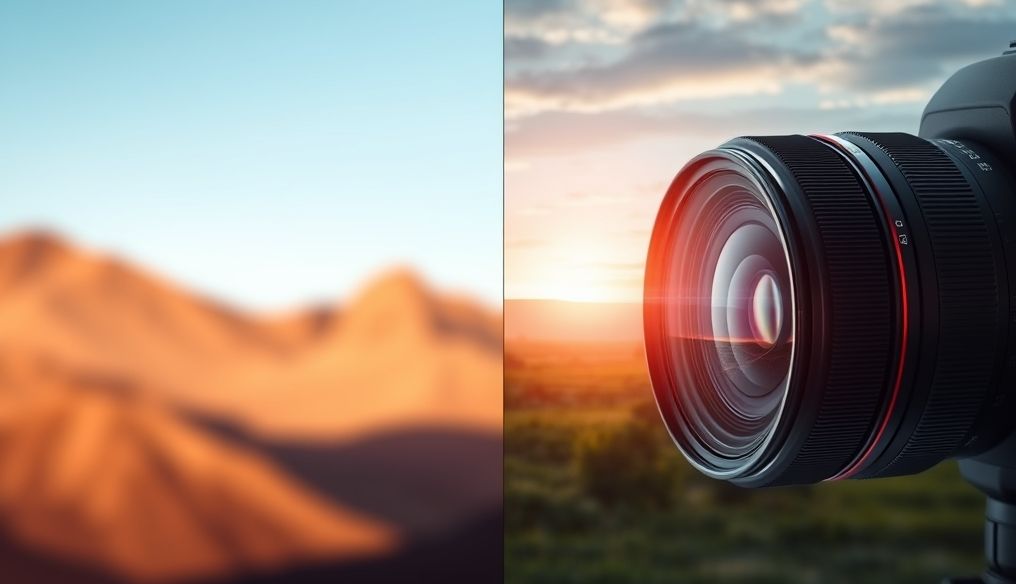What is the Difference Between Prime and Zoom Lenses and Which One is Right for You?
In the world of photography, the lens is one of the most important elements that determine the final image quality. There are two main types of lenses: Prime Lenses and Zoom Lenses. Each type has its advantages and disadvantages, and understanding these differences helps photographers choose the right lens for their needs and style.
Chapter 1: What are Prime Lenses?
Prime lenses, also known as fixed lenses, are lenses with a fixed focal length. In other words, you cannot change the magnification or zoom using this lens. For example, a 50mm lens is a prime lens, and a 35mm lens is also a prime lens.
Advantages of Prime Lenses:
- High Image Quality: Prime lenses are known for their exceptional image quality. Due to the fewer moving elements inside the lens, images are sharper and clearer, with less distortion and chromatic aberration.
- Wide Aperture: Prime lenses are often capable of achieving a very wide aperture (such as f/1.4 or f/1.8). This allows more light to enter the camera, making them ideal for shooting in low-light conditions and creating a beautiful "bokeh" effect (blurred background).
- Size and Weight: Prime lenses are usually smaller and lighter than zoom lenses, making them easy to carry and use for long periods.
- Price: Prime lenses are generally cheaper than zoom lenses of similar quality.
Disadvantages of Prime Lenses:
- Lack of Flexibility: Due to the inability to change the focal length, the photographer must physically move to frame the image differently. This can be restrictive in some cases.
- Need for Multiple Lenses: To cover a wide range of focal lengths, you may need to purchase several different prime lenses.
Chapter 2: What are Zoom Lenses?
Zoom lenses are lenses with a variable focal length. You can rotate a ring on the lens to change the magnification or zoom. For example, a 24-70mm lens is a zoom lens, and a 70-200mm lens is also a zoom lens.
Advantages of Zoom Lenses:
- Flexibility: Zoom lenses offer great flexibility in framing the image. You can change the focal length without having to move.
- Convenience: A single zoom lens can replace several prime lenses, reducing the need to change lenses frequently.
- Versatility: Zoom lenses can be used in a variety of types of photography, such as landscapes, portraits, and sports.
Disadvantages of Zoom Lenses:
- Lower Image Quality: In general, the image quality in zoom lenses is lower than in prime lenses. Images may be less sharp and more prone to distortion and chromatic aberration.
- Narrower Aperture: Zoom lenses usually have a narrower aperture than prime lenses. This means they may not be suitable for shooting in low-light conditions or creating a strong "bokeh" effect.
- Size and Weight: Zoom lenses are often larger and heavier than prime lenses.
- Price: High-quality zoom lenses are usually more expensive than prime lenses.
Chapter 3: Direct Comparison Between Prime and Zoom Lenses
| Feature | Prime Lenses | Zoom Lenses |
|---|---|---|
| Image Quality | Higher | Lower |
| Aperture | Wider | Narrower |
| Flexibility | Lower | Higher |
| Size and Weight | Smaller and Lighter | Larger and Heavier |
| Price | Cheaper (Mostly) | More Expensive (Mostly) |
Chapter 4: When to Choose a Prime Lens?
Prime lenses are an excellent choice in the following situations:
- Shooting in Low-Light Conditions: If you are shooting indoors or at night, the wide aperture of a prime lens allows more light to enter, reducing the need to use a flash or raise the ISO.
- Portrait Photography: The wide aperture of a prime lens helps create a beautiful blurred background (bokeh) that separates the subject from the background.
- Street Photography: Prime lenses are often small and lightweight, making them ideal for street photography where you need to move freely.
- When Image Quality is the Top Priority: If you are looking for the best possible image quality, a prime lens is the best choice.
Chapter 5: When to Choose a Zoom Lens?
Zoom lenses are an excellent choice in the following situations:
- Landscape Photography: A zoom lens allows you to change the focal length to frame different landscapes without having to move.
- Sports Photography: A zoom lens allows you to capture close-up shots of sporting events from a distance.
- Wildlife Photography: A zoom lens allows you to capture images of wild animals without getting close to them and putting yourself in danger.
- When Flexibility is the Top Priority: If you need a versatile lens that can handle a variety of situations, a zoom lens is the best choice.
Chapter 6: Practical Examples of Using Prime and Zoom Lenses
Example 1: Wedding Photography
At a wedding, a photographer might use a 35mm or 50mm prime lens to capture intimate photos of the bride and groom and guests. They might also use a 24-70mm zoom lens to capture wider shots of the ceremony and reception.
Example 2: Safari Trip
On a safari trip, a photographer might use a 70-200mm or 100-400mm zoom lens to capture photos of wild animals from a distance. They might also use a 50mm prime lens to capture photos of the surrounding landscapes.
Chapter 7: Other Factors to Consider
In addition to the advantages and disadvantages mentioned above, there are some other factors to consider when choosing a lens:
- Your Budget: Lens prices can vary greatly. Set a budget and stick to it.
- Camera Type: Make sure the lens is compatible with the type of camera you have.
- Shooting Style: Think about the type of photography you do frequently and choose the lens that suits your style.
- Future Needs: Think about your future needs and choose a lens that will be useful to you in the long run.
Chapter 8: Tips for Choosing the Right Lens
- Try Lenses Before Buying: If possible, rent or borrow the lenses you are considering before buying them. This will give you a better idea of how they perform in reality.
- Read Reviews: Look for reviews of the lenses you are considering from reliable sources.
- Ask Other Photographers: Talk to other photographers and ask them for recommendations.
- Don't Be Afraid to Experiment: Don't hesitate to try different types of lenses to find the one that suits you.
Chapter 9: Conclusion
There is no right or wrong answer when it comes to choosing between prime and zoom lenses. The best choice depends on your needs, style, and budget. Consider the advantages and disadvantages mentioned above and choose the lens that will help you capture the best possible images.
We hope this article has helped you understand the difference between prime and zoom lenses. Good luck on your journey in the world of photography!




